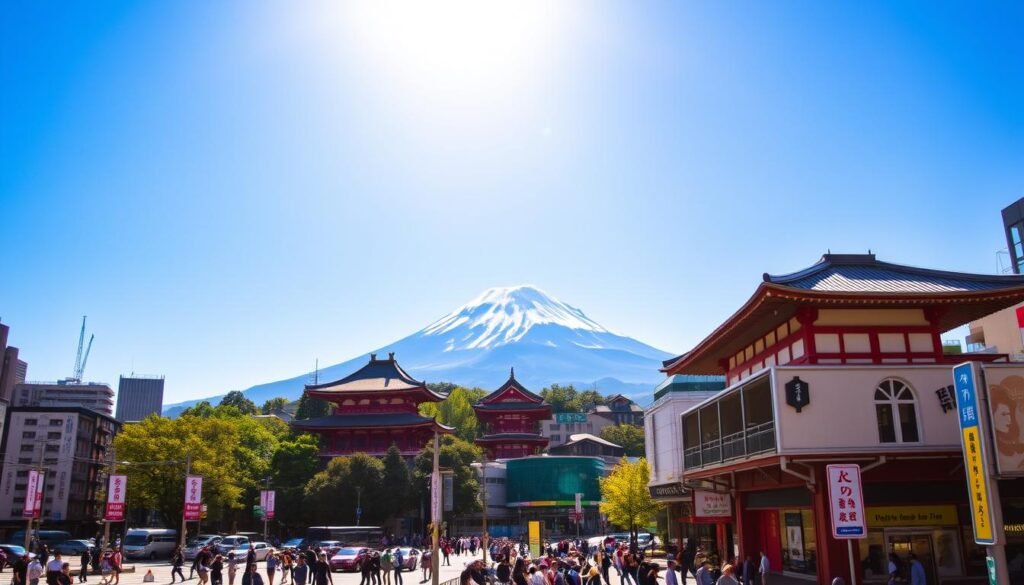Surprising fact: more than 60% of my happiest travel memories came from a single country, and that one place kept pulling me back.
I left a corporate career and became a full-time travel blogger after my first visit in 2013. I returned six more times and built a personal list of 30+ must-try experiences. These range from Mt. Fuji views at Chureito Pagoda to quiet tea ceremonies in Kyoto and sushi breakfasts at Tsukiji.
This guide is built for practical planning. Skim sections that match your interests—nature, food, pop culture, or onsen—and bookmark entries that fit your route. Every pick is something I have done myself, not just a social feed highlight.
Use this article as a one-stop map: it helps you book with the right lead time, pick neighborhoods, and find quieter alternatives when crowds spike. Expect insider tips like ticket windows and best times of day so you can save time and enjoy each experience fully.
Key Takeaways
- I left corporate life and fell for travel after one transformative trip.
- The guide lists 30+ real experiences I tried across seasons.
- Use sections by interest for faster planning and less stress.
- I include practical tips: timing, tickets, and quieter alternatives.
- Expect a mix of iconic sites and low-key local favorites.
Why Japan Captivated Me: A Friendly Intro and How to Use This List
My first trip at 21 started a habit: I kept returning for flavors, festivals, and quiet shrines. From that 2013 visit I made six trips, drawn by sushi mornings, Fushimi Inari’s torii, and Miyajima’s floating gate. I’ll explain why the blend of neon cities and old rituals feels so welcoming, especially because friendly people and precise service ease even a first time traveler’s nerves.
This list is organized like a simple itinerary builder. Each section flags when to go and how much time you’ll need. Pick a few city highlights, add cultural days, and sprinkle nature escapes for balance. I call out seasonal windows—cherry blossom and autumn color months—so your best experience lands on the right calendar.
I include small logistics that matter: early starts, advance tickets, and weather backups. If rain shifts plans, I offer alternatives so your trip still feels full. My tone is practical and supportive. Plan with ease, not overwhelm.
- Quick tip: combine city, culture, and nature for a richer stay.
- Crowd tip: arrive early at top sites for calmer moments.
Iconic Views: Mt. Fuji Moments You’ll Never Forget
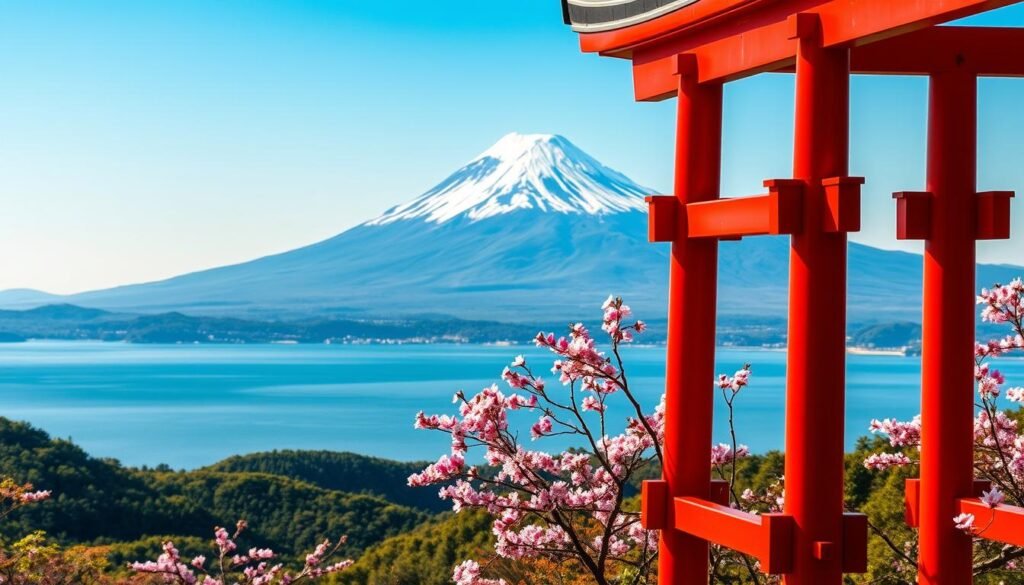
Sunrise at Chureito Pagoda offers one of the best views of Mt. Fuji and is worth the early alarm. The red, five-storied pagoda frames the peak so neatly that a clear morning feels almost staged for photos.
Chureito Pagoda sunrise
I walk you up the steps for that postcard shot and explain why dawn gives the clearest visibility. Bring a mid-telephoto lens to compress Fuji with the pagoda and capture a world-famous view.
Fuji Five Lakes: day trip vs. a longer stay
A fast trip from Tokyo can hit Kawaguchiko’s highlights, but staying two or three days buys better time for clear skies. Kawaguchiko sits above 800 m, so the season shifts: expect spring sakura around mid-April and momiji near mid-October.
- Must-see places: lakeside reflections at Kawaguchi and Motosu.
- Transport: train plus local buses; overnight stays give flexible timing.
- Packing tip: layers and a thermos if you wait at dawn; patience often rewards the best shots.
Kyoto Classics: Temples, Shrines, and Quiet Streets I Keep Returning To
![]()
Each return to Kyoto teaches me a new shortcut and a softer way to see familiar temples. I favor early starts and gentle pacing so one day can hold several highlights without rush.
Fushimi Inari beyond the first gates for a crowd-free climb
Skip the first torii cluster and walk about 20–30 minutes up the trail. That stretch becomes quiet and feels almost private if you arrive at morning.
Practical tip: aim for dawn light; lower contrast helps your photos and calms the path.
Arashiyama Bamboo Grove and a calmer bamboo at Kōdai-ji
Arashiyama is iconic but busy. For a gentler vibe, visit the bamboo near Kōdai-ji after Kiyomizu-dera for a tranquil pause.You can learn best-places-to-visit-in-march
Golden glow at Kinkaku-ji (Golden Pavilion)
Kinkaku-ji’s gold leaf catches sun differently by season. Shoot mid-morning for the strongest reflections around the pond. This Kyoto temples highlight never feels stale.
Wandering Ninenzaka & Sannenzaka’s traditional lanes
Walk a loop from Kiyomizu-dera through Ninenzaka and Sannenzaka. Pop into tea houses, small shops, and kimono rental spots early to avoid crowds.
“Slow your step and Kyoto rewards you with quiet corners and friendly local faces.”
- I map the sequence to save time and avoid backtracking on a packed trip.
- Simple etiquette: clap at shrines, bow at temples, and respect other people.
Final note: these places offer a sincere traditional japanese experience that stays with you long after the visit.
Culture Deep-Dive: Tea Ceremonies, Sake Breweries, and Castle Days
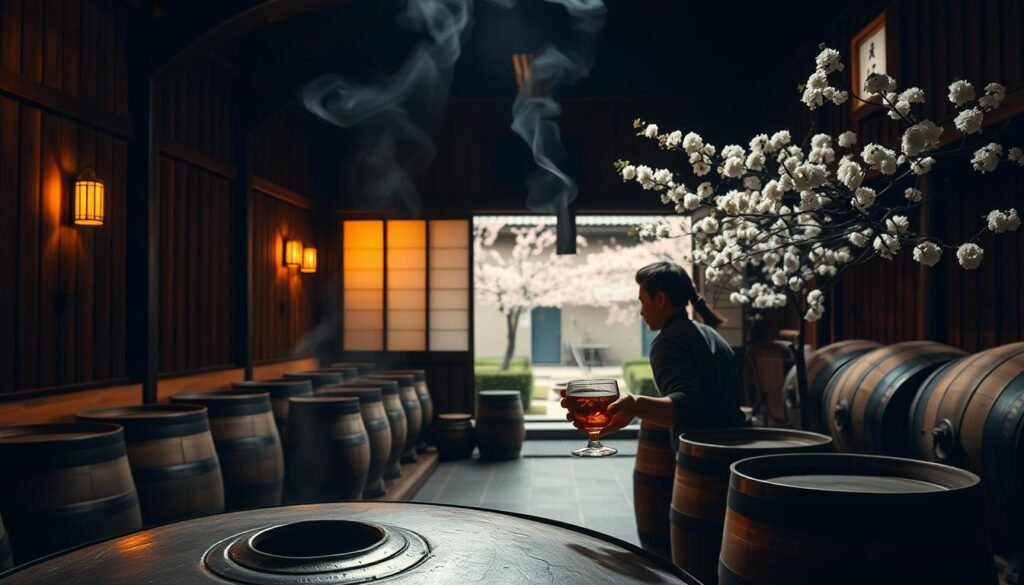
Some of my best cultural memories began with a quiet tea room and a careful, patient host. A 100-year-old teahouse on Sannenzaka near Kiyomizudera felt like stepping into another pace of life. The host demonstrated each movement slowly, and the ritual made the experience feel reverent and immediate.
Budget option: Jotokuji Temple runs an affordable ceremony that keeps the same spirit without the high price. Pair either visit with nearby temples to build a full culture day.
Takayama’s Sanmachi Street and local breweries
Sanmachi Street has several traditional sake breweries offering free and paid tastings. I sampled a light, floral brew and a drier, polished-rice style. Ask for rice-polish level and aroma notes if you prefer a specific profile.You can learn more about best-places-to-visit-in-costa-rica
Castle day: Himeji, Matsumoto, Osaka
Plan castle visits as day trips. Himeji’s White Heron exterior dazzles, Matsumoto’s black keep frames the Alps, and Osaka’s grounds buzz with energy. Wear comfortable shoes: interiors often have steep stairs and narrow corridors. Allow extra time for lines and photography.
- I recommend one full day for a castle visit and half a day for Takayama tastings.
- Sequence Kyoto tea in the morning, then nearby places and temples for a richer experience.
“Slow, attentive rituals and a well-timed castle day made my trip feel curated rather than rushed.”
Food Adventures: From Ramen Rules to Tsukiji Breakfasts
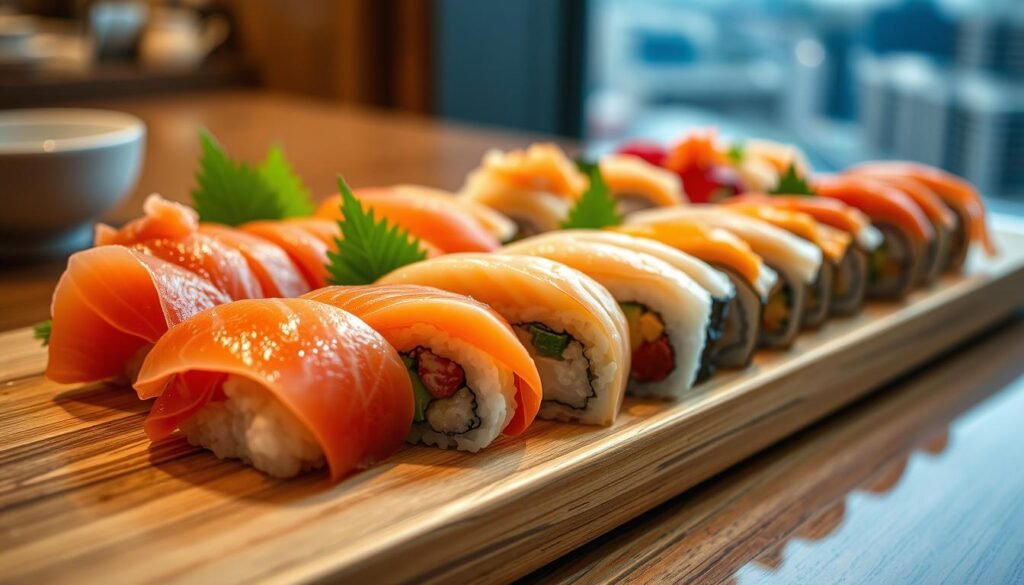
My best itineraries begin with where I’ll eat—meals shape the whole trip.
Ramen a day is my rule. Use the vending machine at busy restaurants: pick your broth, swap toppings, and hand the ticket to the chef. It speeds the line and helps you try styles from rich tonkotsu to bright shoyu.You can learn more about best-places-to-visit-in-january
Street bites and regional flavors
Seek okonomiyaki in Kansai, takoyaki in Osaka, and perfectly crisp tempura with a light salt sprinkle. Also hunt the wild world of Kit Kats—regional flavors make great souvenirs and local shops often stock the best selection.
Tsukiji mornings and smart sushi etiquette
Tsukiji Outer Market still shines for fresh sushi or donburi breakfast. Arrive early, pick stalls with active lines, and try fatty tuna or uni first.
- Pro tip: kaiten (conveyor) sushi and lunch sets save time and money without losing quality.
“A simple bowl or a market breakfast can turn a rushed day into a lasting memory.”
Tokyo After Dark: Skyscraper Views, Arcades, and Neon Walks
![]()
When night falls, Tokyo shifts from efficient city to electric playground. I time my evenings so sunset over Shibuya becomes a slow entrance into neon and motion.
Shibuya Scramble and sunset viewing spots
Over two million people cross Shibuya Scramble daily, and watching that flow is an essential experience. For a casual vantage, I grab a seat at Starbucks facing the crossing. For sweeping views, book Shibuya Sky—note tickets are now available only two weeks ahead.
Arcades, gachapon, and late-night energy
Tokyo’s multi-floor arcades stay lively late. I weave through crane games, multi-level halls, and long walls of gachapon for playful finds and unique souvenirs from small shops.
Street photography works best from above, then again at ground level to capture the moving crowd. Pack a quick late snack—ramen or an onigiri—so you can keep exploring after dark.
“Plan your return: trains run late but not all night; check last train times so you get home comfortably.”
Theme Park Magic: DisneySea, Disneyland, and USJ Highlights
![]()
Theme parks here blend cinematic design with adult comforts, making a park visit feel like a staged evening as much as a day outing. I outline clear options so you can pick the best spot for your itinerary.
Why DisneySea feels grown-up (and MiraCosta perks)
DisneySea stands out for Mediterranean Harbor bars, Broadway-level shows, and richly themed islands like Mysterious Island. Staying at Hotel MiraCosta gets you inside the park for an easy mid-day break and a magical morning start.
How I plan a park day and book smart
One-day Disney tickets start at 7,900 yen and must be booked online. If the official site rejects an international card, I use Klook. Prioritize high-demand rides first and save slower attractions for time gaps.
USJ highlights and meal strategy
Universal Studios Japan packs Super Nintendo World and the Wizarding World with major thrills. Split your day by targeting the busiest lands at opening. Use mobile ordering at restaurants or eat off-peak for faster service and a calmer experience.
| Park | Best for | Priority ride | Booking note |
|---|---|---|---|
| DisneySea | Adults, immersive theming | Journeys & shows | Buy online; MiraCosta access |
| Tokyo Disneyland | Classic rides, families | Space Mountain | Traditional attractions; book ahead |
| USJ | Thrills & fan worlds | Wizarding/ Nintendo rides | Timed entries for popular lands |
Transit from the city can eat hours, so leave early and plan transport. Small choices on timing make a big difference for your trip and the places you’ll remember.
Pop Culture Play: Ghibli, Pokemon, TeamLab, and Go-Karting
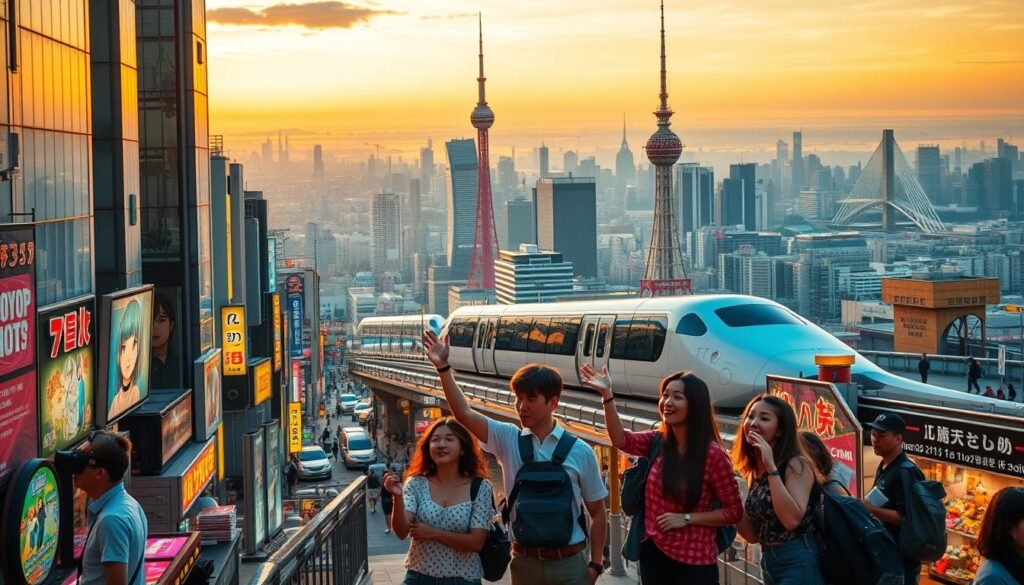
From studio sketches to neon go-karts, modern Japanese pop draws me into playful corners of the city. This section lists clear steps for tickets, what charmed me inside each venue, and practical tips so a single day can feel full without being rushed.
Ghibli Museum: when and how to snag a ticket
Ghibli Museum tickets cost 1,000 yen and sell fast. Book at 10am JST on the 10th of each month via Lawson for the following month, and bring your passport when you enter.
The place itself is delightfully small: whimsical exhibits, original sketches, and a short film that plays regardless of language. I found the quiet corners especially magical.
Pokemon Center Mega Tokyo at Sunshine City
Pokemon Center Mega Tokyo sits inside Sunshine City in Ikebukuro. It spans multiple floors, so start at the main merch area and work outward.
I go early for exclusive items and avoid long lines at the cafe. If you love rare souvenirs, this is the best shops stop on a pop-focused route.
TeamLab Planets vs. Borderless: which fits your taste
TeamLab Planets (from 4,200 yen) features water, koi, and an orchid garden. The reopened Borderless at Azabudai Hills offers sprawling, ever-changing rooms.
Options depend on whether you want tactile water interactions (Planets) or seamless, large-scale digital landscapes (Borderless). Both require advance booking; pick early or late slots for fewer crowds and better photos.
Cosplay go-karting: permits, routes, and sunset tips
To drive, you need an international driving permit. Tours run routes through Akihabara, Skytree, Shibuya, and Harajuku. I prefer a sunset start: golden hour blends into neon for an unforgettable drive.
Expect people to wave and snap photos—it’s part of the charm. Follow your guide’s signals and wear something snug under costumes for safety and comfort.
“A single pop-culture day showed me how playful and precise modern Tokyo can be.”
For a handy planning roundup and more city picks, check my Top Tokyo picks. With a little advance booking, these stops make a compact, joyful part of any trip.
Spiritual and Historical Japan: Monks, Memorials, and Sumo
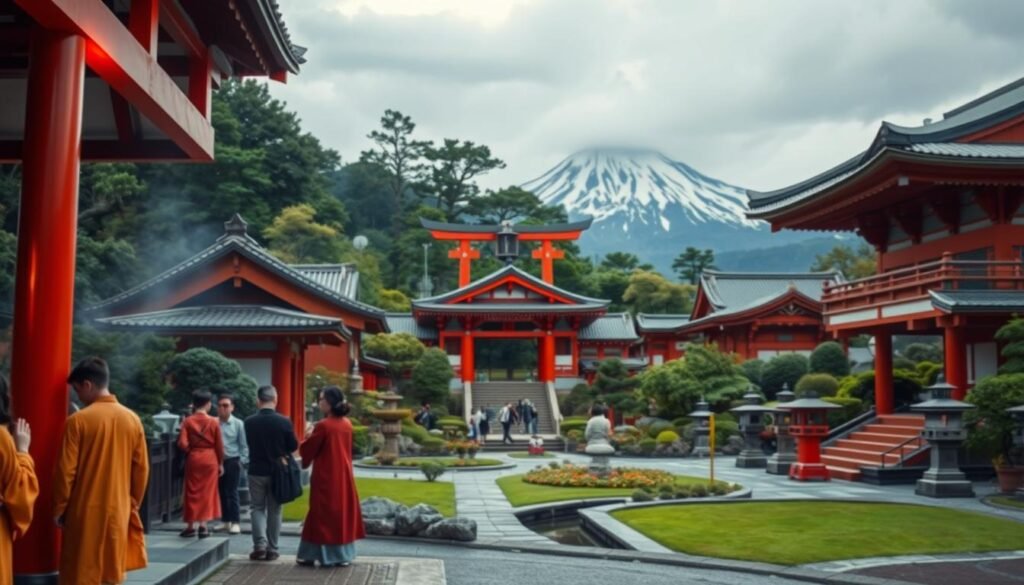
A slow morning at a temple can reset your rhythm and reshape how you travel. I found that Koyasan stays, with tatami rooms and dawn chants, are a real cultural reset.
Koyasan temple stay and shojin cuisine
Monk-run lodgings include strict but gentle routines: evening lights, simple talk, and shojin ryori meals focused on seasonal vegetables. Morning prayer is quiet and powerful; wake early and bring a calm heart.
Hiroshima Peace Memorial
A visit here is sobering and essential. The museum frames the modern history of the country and helps you understand the human cost and hope that followed.
Sumo practice versus tournament days
Sumo tournaments run in Jan, May, and Sep. Stable practices let you watch up close for one to two hours but expect silence and seated observation. Tournament days are loud, celebratory, and best booked early.
Practical notes: book temple lodgings and stable visits in advance, plan a gentle day-by-day pace, and allow time for reflection. Travel with an open heart; these experiences connect you with people and moments that stay with me long after the trip.
Nature and Seasons: Cherry Blossoms, Momiji, and Flower Festivals
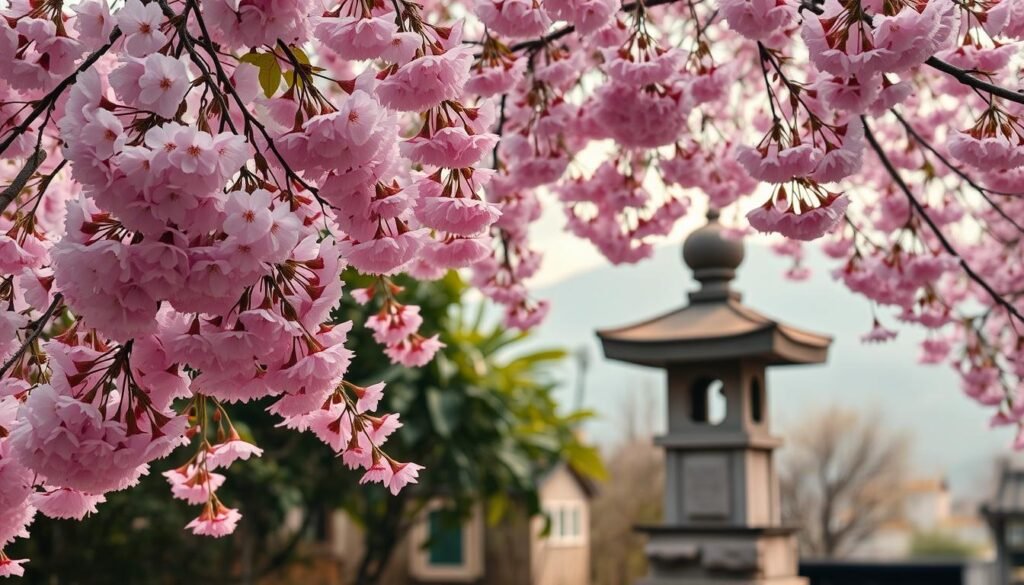
Every spring I chase blossoms and autumn color, and I plan routes that match peak windows.
Timing sakura: Tokyo’s first bloom usually arrives in late March, and Kyoto follows a few days later. Aim for Nakameguro River or Chidorigafuchi by day or lit at night. If forecasts shift by a few days, pivot north or check Shinjuku Gyoen for late-blooming trees.
Hanami picnic tips
My go-to setup: a small tarp, snacks from a supermarket, wet wipes, and light layers. Claim a spot politely and avoid loud music. Pack out your trash; local etiquette keeps these spots lovely for everyone.
Autumn and Fuji flowers
Nikko hits peak color in early November near Toshogu Shrine. Higher altitudes like Lake Chuzenji and Kegon Falls peak mid–late October, offering dramatic views.
The Fuji Shibazakura Festival paints fields pink near Fuji each spring. Plan around weekends, check local forecasts the night before, and blend a nature day with nearby urban highlights so your trip stays balanced and memorable.
Wildlife Encounters the Right Way
Wildlife can offer gentle, unforgettable moments if you meet animals with respect and patience.
I’ve learned that simple habits make the difference between a great experience and a harmful one. Small choices show respect for local culture and the animals themselves.
Nara’s deer near Tōdai-ji (cracker etiquette)
Nara’s deer cluster by Tōdai-ji and love the local crackers sold outside the shrine. Buy official crackers, hold them flat, and let a deer gently take one.
- Never tease or chase; limit servings and avoid sudden moves.
- Keep hands low and a little distance; protect cameras and bags.
Arashiyama Monkey Park and the quick hike
The short hike up to Arashiyama Monkey Park rewards you with playful troops and sweeping valley views over Kyoto. Visit early or late for cooler times and calmer animals.
Choosing ethical cat cafes and what I avoid
I seek rescue-forward spots like Neco Republic and Shelter Cat and vegan cafe neu in Osaka. I avoid exotic-animal cafes with weak welfare rules. Pick cafes that list adoption, vet care, and clear handling policies.
“Prioritize animal welfare over a photo; it keeps the world kinder for both travelers and animals.”
Quick tips: visit at cooler hours, mind food around curious animals, and keep an open mind so your trip supports good places and local shops that help rescues.
Onsen Bliss and Ryokan Nights: How I Unwind
A night at a ryokan turns ordinary travel into a slow, sensory memory I keep returning to. The ritual of an onsen and a tatami room makes a long day feel whole. I use these stays as a deliberate pause in my schedule so my next morning feels fresh.
Public baths vs. private in-room onsen (and etiquette)
Public onsen are social and quiet by custom; private in-room baths give privacy for couples or nervous first-timers. Both offer that warm, mineral soak at roughly 38-42°C, which is where your muscles start to melt.
Etiquette is simple: wash thoroughly before entering, keep long hair tied back, and accept the no-swimsuit norm. Move slowly when you stand and sip water before and after a soak to avoid lightheadedness.
Kaiseki dinners, tatami rooms, and my favorite ryokan stays
Ryokans pair tatami floors, futon bedding, and multi-course kaiseki dinners that spotlight local food and seasonality. My favorite stays are in Hakone, Atami Onsen, and Miyajima; I splurge on a private bath for a special anniversary or when I need extra quiet.
- I time soaks twice: a short pre-dinner soak to relax, and a gentle soak before bed for deeper sleep.
- Bring a small towel and keep it folded on your head or the side bench—never in the water.
- Onsens are a restorative part of any longer itinerary; they reset energy for the next day.
“That warm sink into mineral water made the whole trip feel curated and slow in the best way.”
things to do in japan for First-Timers: My Golden Route Shortlist
If this is your first trip, pick a compact route that shows city life, history, and food without rushing. I use a simple Tokyo–Kyoto–Osaka loop and add Miyajima and Nara for easy daylight escapes.
Tokyo–Kyoto–Osaka with Miyajima and Nara add-ons
My basic itinerary: Tokyo (3–4 days) for nightlife and neighborhoods, Kyoto (2–3 days) for temples, Osaka (1–2 days) for street food. Add a day trip to Nara for friendly deer and one night on Miyajima for the floating torii at high tide.
Why I ride the Shinkansen instead of flying domestically
The bullet train reaches 300+ km/h and is a calm, punctual experience. I eat an eki-bento, watch the countryside, and relax in roomy seats. Skip flights between Tokyo and Osaka—the train saves door-to-door time and stress.
- One-week sequence: focus on Tokyo + Kyoto, shorten Osaka.
- Two-week pace: add Miyajima night and a Nara morning.
- Ticket tip: reserve seats online or at station kiosks; watch platform signs and line up at the marked doors.
“Balance each day: one temple block, one food block, one neighborhood walk.”
Beyond the Mainland: Okinawa’s Beaches and World-Class Diving
I found a distinct, slower rhythm in Okinawa that balances beach time with serious marine life encounters.
Kerama National Park: easy access and turtle bays
Kerama is a short ferry hop from Naha and an ideal place for a day or overnight. Tokashiki is about 35 minutes, while Aka and Zamami run near an hour by ferry or charter.
Snorkel or dive calm bays at Ama Beach and Tokashiku Beach and plan sensible surface intervals for safety. Pack reef-safe sunscreen and a light rain jacket for quick weather shifts.
Ishigaki, Taketomi, and manta season
Ishigaki hosts manta rays year-round, with the best season from April–October near Kabira Bay. Add a short hop to Taketomi for a charming village experience between dives.
Yonaguni monuments and hammerhead trips
Yonaguni’s underwater monument is a thrilling drift dive. Hammerheads appear mainly January–March and require experienced divers—guides often expect ~100 logged dives for safety.
“Patience pays off; many people travel for the chance of a sighting rather than a guarantee.”
Miyakojima’s Yonaha Maehama: pure beach therapy
Finish slow with Yonaha Maehama—powder sand and impossible turquoise make it a perfect unwind after active travel segments. Check ferry schedules and weather the night before so your island-hopping trip runs smoothly.
Snow, Slopes, and Powder Dreams
Snow days rewired my travel rhythm; sudden storms often meant the best powder and the happiest memories.
I sketch how four top resorts feel on the ground and why each makes a winter trip special.
Niseko, Hakuba, Myoko, and my favorite—Nozawa Onsen
Niseko has an international vibe and big powder fields. Hakuba offers high alpine terrain and long runs. Myoko Kogen gives steep pitches and quieter lifts.
Nozawa Onsen combines varied runs, true village charm, and onsen that warm you after a long day. Night streets fill with ramen shops and izakaya skewers that taste better after a soak.best-places-to-visit-in-february
How I plan mountain days and nights
I plan a few flexible days for powder and one rest day for strolling the village. Storm days are often the best time to score fresh lines; clear mornings reward views and photos.
- Base near a lift for quick access and walkable evening options.
- Use train + bus combos or send bags ahead to ease transfers.
- Pack layers for changing temps and bring a headlamp for night skiing or walks.
“Build a rest day into your trip—soak, eat, and explore the small streets without hurry.”
| Resort | Character | Best for | Evening food |
|---|---|---|---|
| Niseko | International, lively | Powder runs & heli options | Ramen, international pubs |
| Hakuba | Big-mountain terrain | Long alpine runs | Izakaya and hot-pot |
| Myoko Kogen | Steep, quieter | Challenging steeps | Cozy local restaurants |
| Nozawa Onsen | Historic village charm | Ski variety + baths | Skewers, noodle houses |
Shopping and Crafts: Knives, Kimonos, and Thoughtful Souvenirs
A short shopping route gave me one of my best souvenirs: a blade I use almost daily.
Kappabashi “Kitchen Street” can overwhelm first visits. I narrowed choices by steel type and profile. I picked a santoku for home cooking because it matched my prep style and travel plans.
Choosing a Japanese kitchen knife on Kappabashi
Look for: carbon vs. stainless steel, santoku vs. gyuto, and sharpening needs. Keep receipts and ask shops about shipping if you don’t want to pack it.
Knife-making workshop in Kyoto
I booked a hands-on forging class. Making a blade turned shopping into a meaningful experience and left me with a lasting souvenir I treasure.
Renting a kimono for timeless photos
Kimono services in Kyoto and Asakusa include dressing and hair. Allow extra time for fittings and plan which historic places you’ll stroll for photos.
Gotokuji Temple’s maneki-neko
Gotokuji is perfect for cat-loving people. Rows of beckoning statues make a mindful gift stop between artisan shops and local restaurants.
| Item | Why buy | Where |
|---|---|---|
| Kitchen knife | Daily use, craft value | Kappabashi, Kyoto workshops |
| Kimono rental | Memorable photos, cultural feel | Kyoto, Asakusa |
| Maneki-neko | Charming gift, small | Gotokuji Temple area |
| Ceramics & tea | Light, useful souvenirs | Local artisan shops |
“Pack big purchases in checked luggage or use shop shipping for peace of mind.”
Smart City Views and Neighborhood Strolls
I often trade a pricey tower ticket for a free observatory and an afternoon exploring nearby streets. Short hops between views and lanes save time and give a fuller city experience.
Free and budget observatories vs. pricey towers
Free options like the Tokyo Metropolitan Government Building and Bunkyo Civic Hall give sturdy skyline value without a fee. The World Trade Center Seaside Top (40th floor) is a budget pick that even allows tripods and great Tokyo Tower views.
When to splurge: pick Skytree or Roppongi Hills if you want a longer panorama, dining floors, or timed-entry perks. Book early morning or late evening to avoid queues.
Harajuku crepes, Omotesando style, and hidden Jiyugaoka calm
Start at Takeshita Street for a quick crepe and playful shops, then walk toward Omotesando’s elegant avenues and architecture. If you need a gentler area, Jiyugaoka’s bakeries and boutiques offer a calm contrast.
Shimokitazawa for vintage, coffee labs, and people-watching
Shimokitazawa is my go-to for vinyl, thrift racks, and serious coffee labs like Ogawa Coffee Laboratory. It’s a perfect low-key afternoon for browsing small shops and lingering over a slow brew.
“Link one rooftop view with a neighborhood stroll — you see the skyline and the real local life.”
| Spot | Why visit | Floor / feature | Savvy tip |
|---|---|---|---|
| Tokyo Metropolitan Building | Free skyline view | 45th floor observation | Arrive at opening for quiet |
| World Trade Center Seaside Top | Tripod-friendly Tokyo Tower view | 40th floor | Good for photographers |
| Tokyo Skytree | Expansive panorama & dining | Multiple observation floors | Book timed tickets online |
| Roppongi Hills | City art, skyline dining | High floor restaurants | Evening bookings reduce lines |
- I map train links to string a view, a snack, and a stroll without backtracking.
- Choose restaurants with easy menus near stations for a relaxed stop.
Conclusion
My rule: book big-ticket windows early and leave room for happy surprises. I mean Ghibli’s monthly drop, Shibuya Sky’s two-week window, and Disney tickets often via Klook.
Use this list as a building block for your first time or for a return. Pick highlights, then add slow mornings and local cafes that make a trip Japan feel personal.
Short on days? Focus on one region. Have weeks? Spread time across Tokyo, Kyoto, and a nature stop. I suggest rough weeks: one for city, one for culture, one for nature if you can.
Tweak the plan for food-forward, nature-heavy, or pop-culture tastes and keep flexible around booking windows.
Visit Japan with curiosity and patience—these places reward presence across a few days or many weeks. Save this guide and share it with friends planning their first trip.


